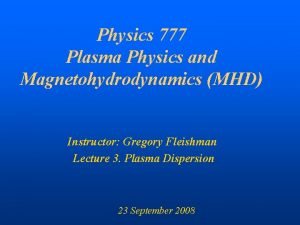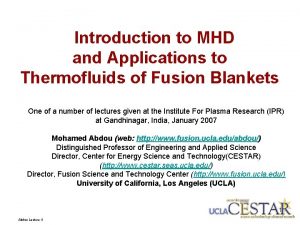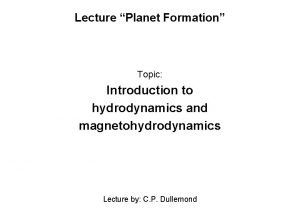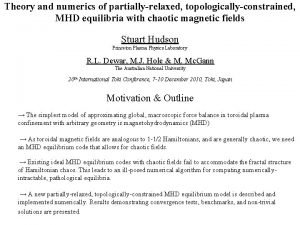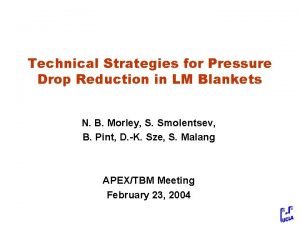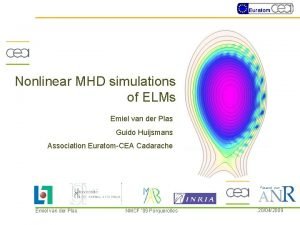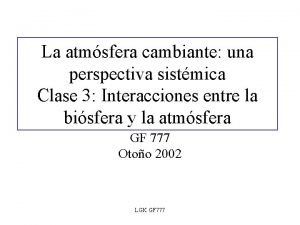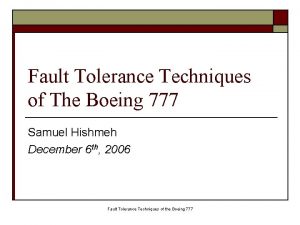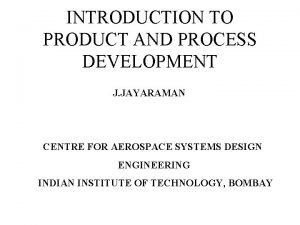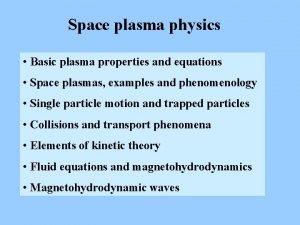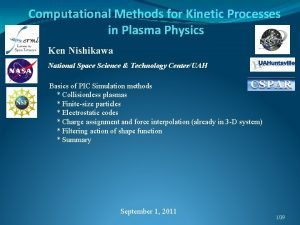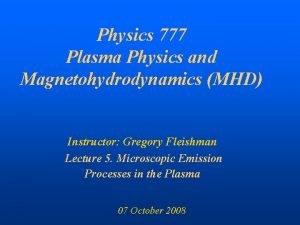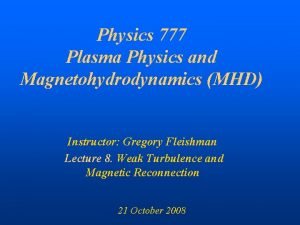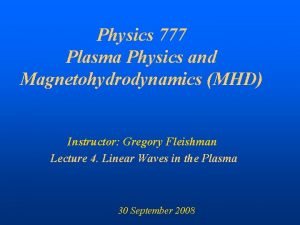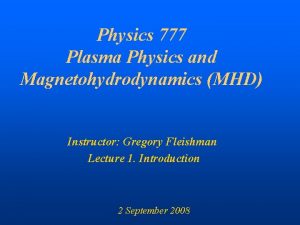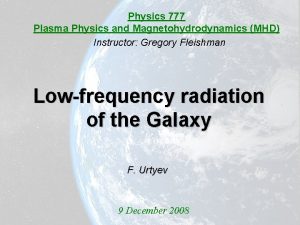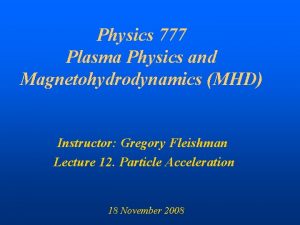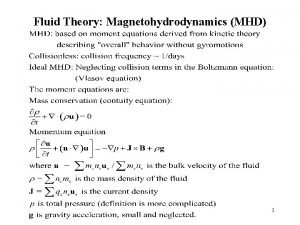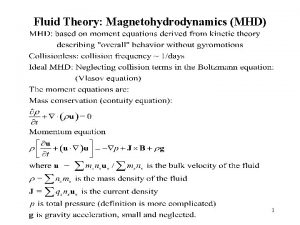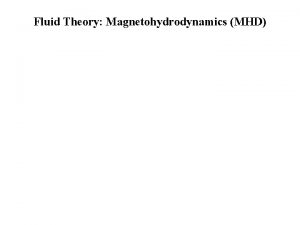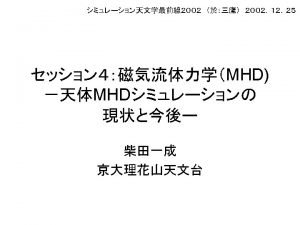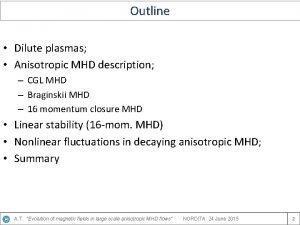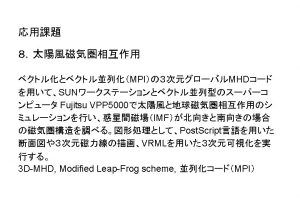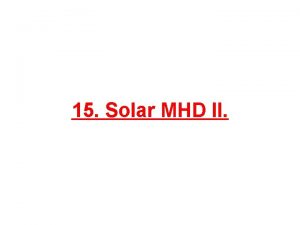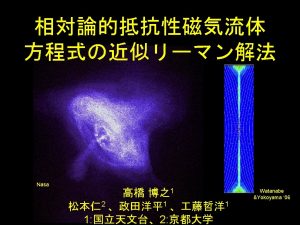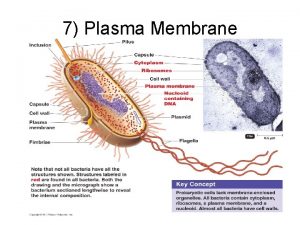Physics 777 Plasma Physics and Magnetohydrodynamics MHD Instructor
























- Slides: 24

Physics 777 Plasma Physics and Magnetohydrodynamics (MHD) Instructor: Gregory Fleishman Lecture 13. Astrophysical Plasmas 02 December 2008

Plan of the Lecture • • Strong Energy Release in the Plasma Collimated Jets Bulk Relativistic Motion of the Plasma More Examples of the Plasmas in Astrophysical Objects

Section 1. Strong Energy Release in the Plasma. Examples. • Release of the magnetic energy: flares in accretion disks, solar/stellar flares: ~1032 erg • Nuclear energy release: Nova (~1046 erg ) and Supernova Ia (~1051 erg ) explosions • Gravitation energy release: core-collapse Supernova explosions (~1051 - 1052 erg ) and accretion of the gas on the black hole.

Credit: Y. Uchiyama, 2008







Section 2. Collimated Jets

Observations of M 87 Shocks?

Schematic GRB from a massive stellar progenitor (Meszaros, Science 2001) Simulation box Prompt emission Accelerated particles emit waves at shocks

Temporal Variability • d. T<1 s, T~100 N=T/d. T>100

COMPACTNESS PROBLEM + e+ + e • d. T ~ 1 ms R < 3 • 107 cm • E ~ 1051 ergs 1057 photons high photon density (many above 500 ke. V). • Optical depth T n R~1015>>1 • Inconsistent with the non thermal spectrum! Spectrum: ? Optically thin Paradox ? Size & Energy: Optically thick

Relativistic Time-Scales C R ~1/ R A D B R • t. B-t. A ~ R (1 - ) / c ~ R/2 2 c • t. C-t. A ~ R(1 -cos )/c ~ R/2 2 c • t. D-t. A ~ /c

The Solution: Relativistic Motion n Due to Relativistic Motion R = 2 c d. T Eph (emitted) = Eph (obs) / • t = -(4+2 a) n TR ~ 1015/ 4+2 a g > 100 (Goodman; Paczynski; Krolik & Pier; Fenimore; Woods & Loeb; Baring &Harding; Piran & Shemi; Lithwick & RS)

1. Doppler frequency shift 2. Directivity and aberration

3. Superluminal motion Source Observer

Section 4. Other examples. Pulsar wind nebulae

3 C 58

Crab nebula Credit: Chandra/HST

Credit: R. Ong, 2004

Section 7. Homework • Oral presentation file, due 12/07/2008.
 Magnetohydrodynamics
Magnetohydrodynamics Forces of magnetism
Forces of magnetism Mhd generator ppt
Mhd generator ppt Mhd alyssa
Mhd alyssa Describe
Describe Introduction to mhd
Introduction to mhd Mhd titel
Mhd titel Astrophysics equations
Astrophysics equations Mhd
Mhd Lms fcis
Lms fcis Mhd
Mhd 401 group
401 group 777f mtow
777f mtow Onlyblue00
Onlyblue00 777 indiana avenue indianapolis in 46202
777 indiana avenue indianapolis in 46202 Fração geratriz de 0 777
Fração geratriz de 0 777 Oceanic airlines 747
Oceanic airlines 747 Code 777 hospital
Code 777 hospital 777
777 Crc boeing 777
Crc boeing 777 777.nine99
777.nine99 Pinpoint simulations 777
Pinpoint simulations 777 1553 bus vulnerabilities
1553 bus vulnerabilities Properties of plasma
Properties of plasma Computational methods in plasma physics
Computational methods in plasma physics



